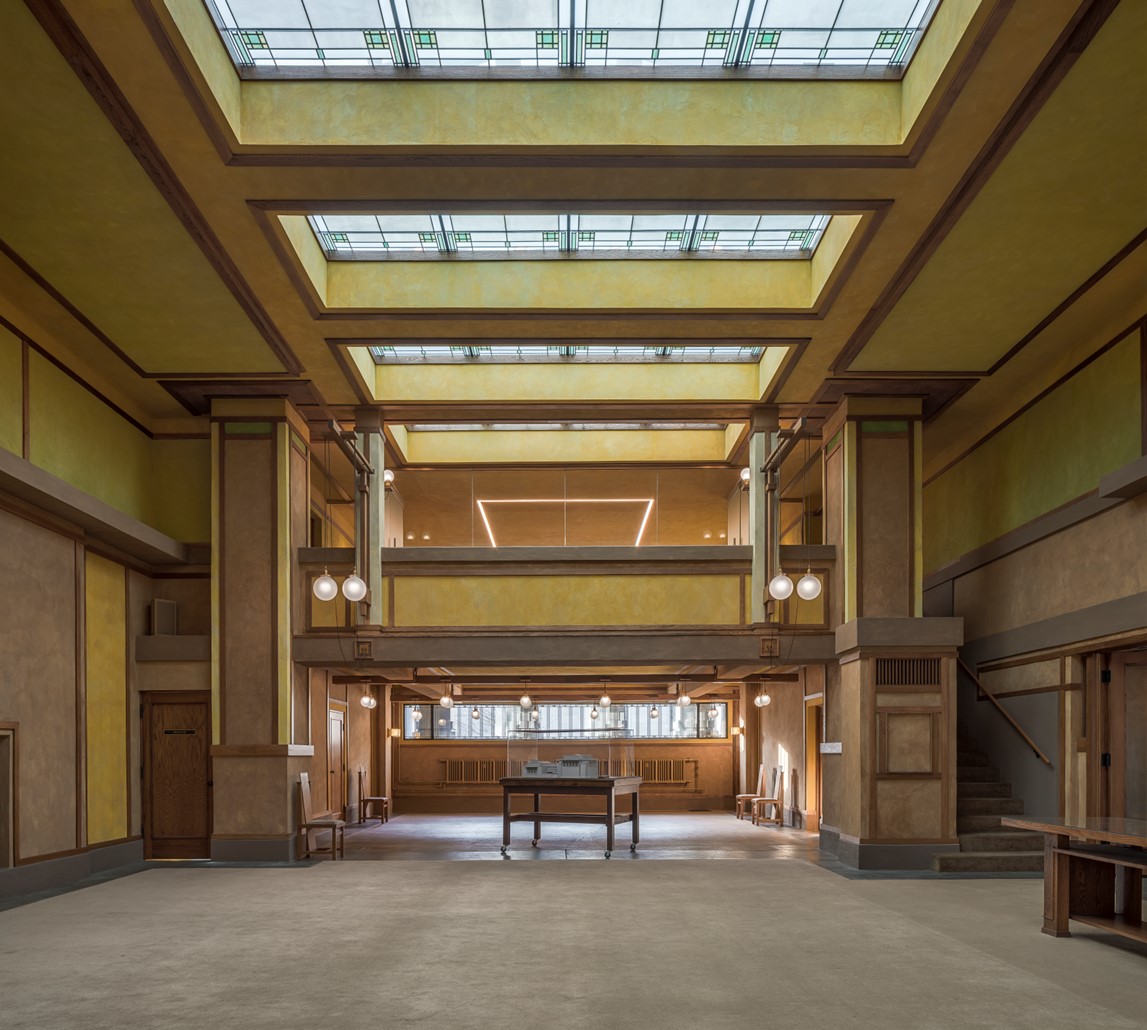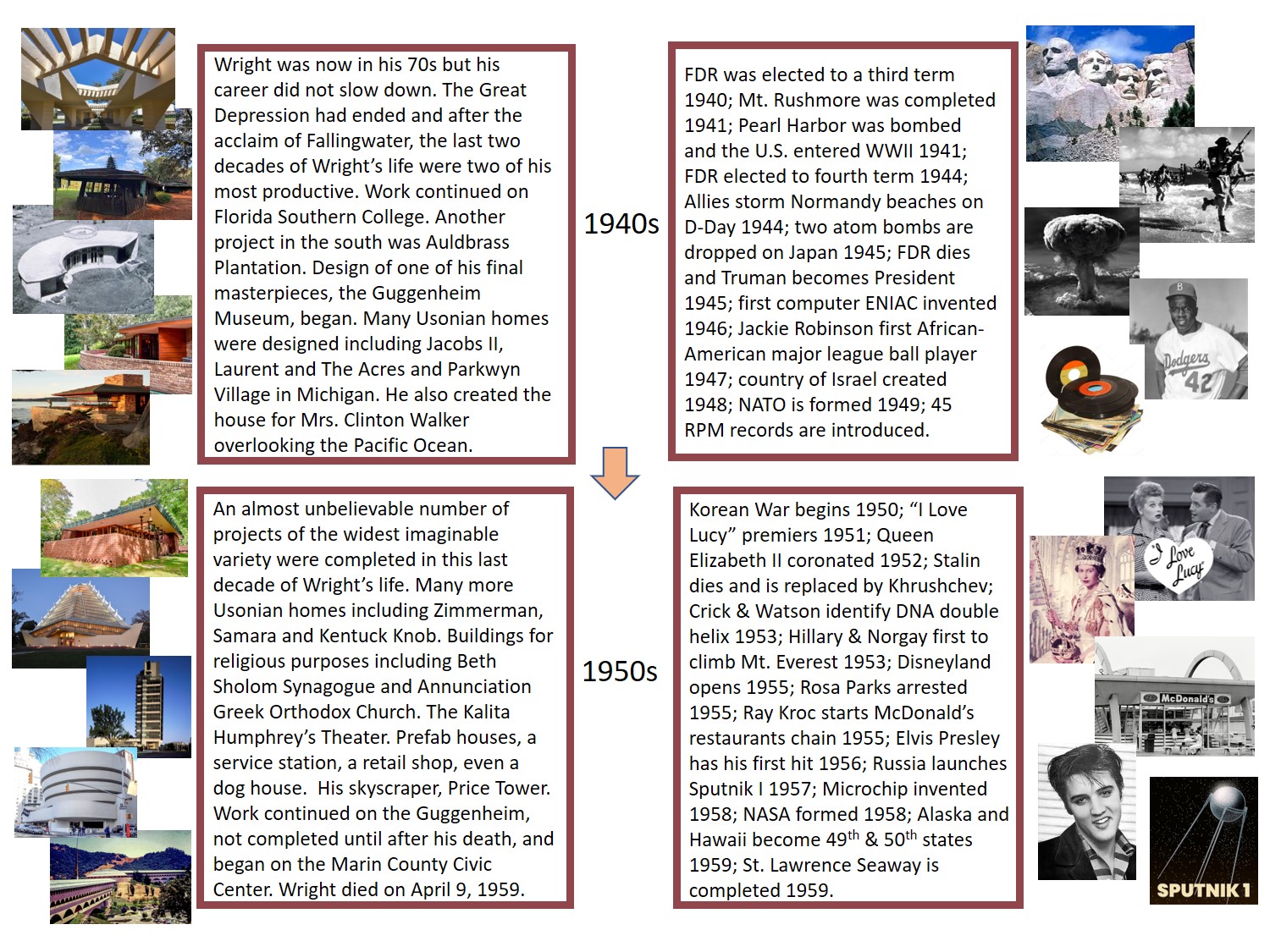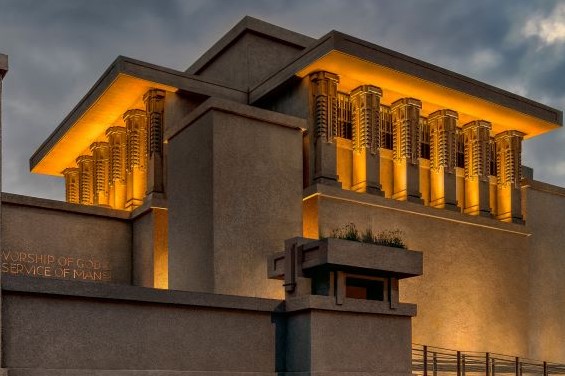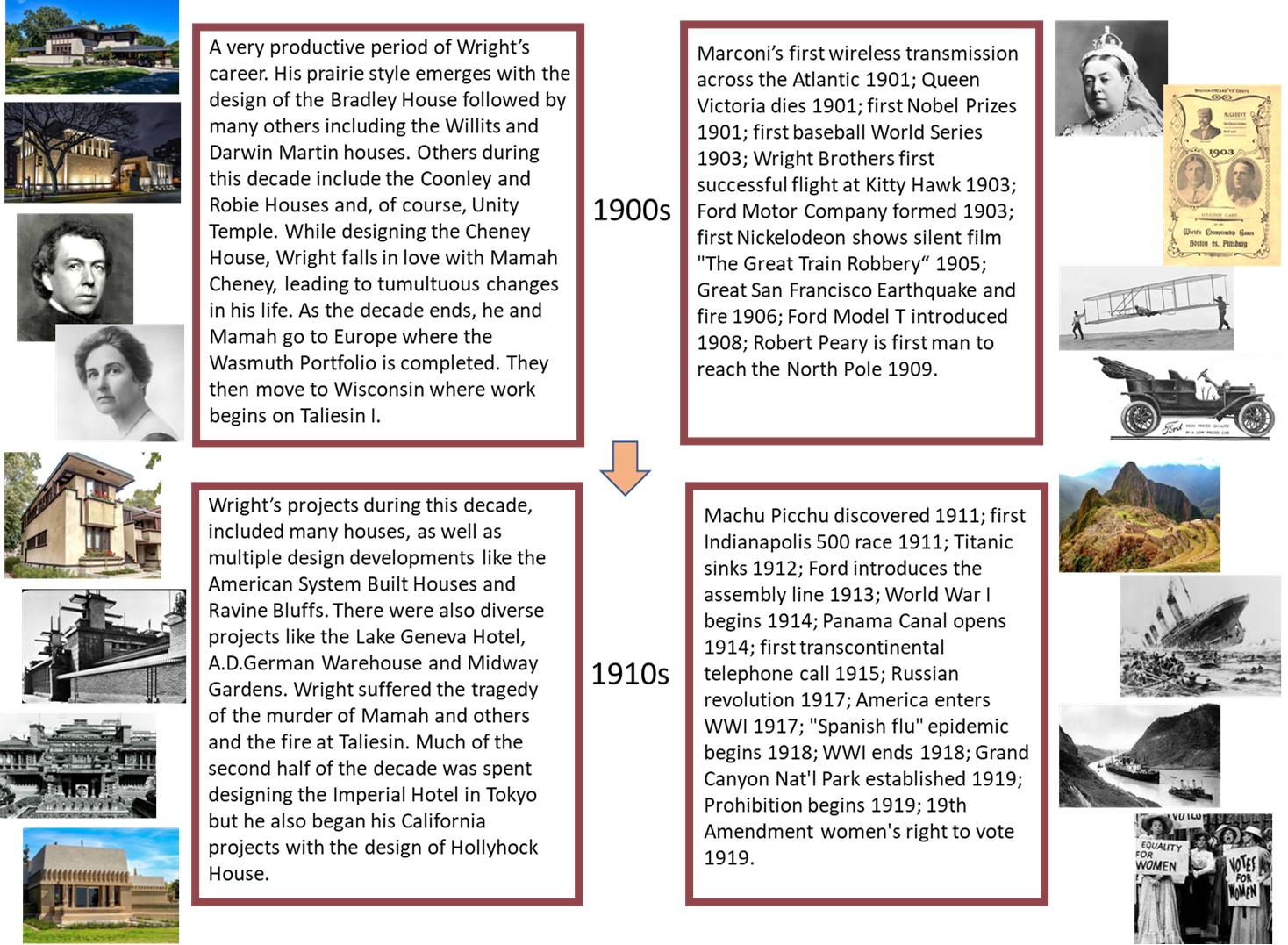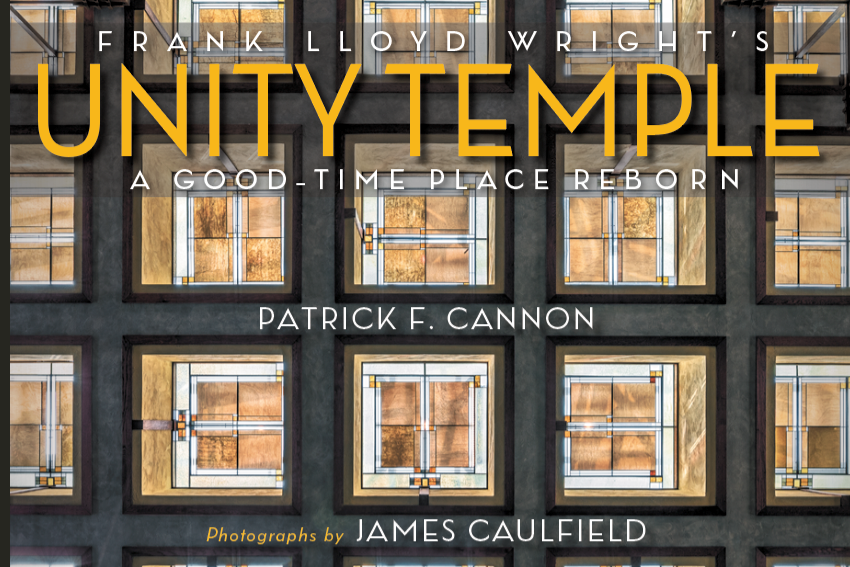Unity Temple exists today thanks to a congregation willing to take a leap of faith and accept a radical design proposed by a young, local architect. Thanks to the continued dedication of the many generations of that congregation to preserving and maintaining the building as their place of worship, admirers of this architectural masterpiece can still experience this unique space. UTRF certainly plays a major role in supporting these preservation efforts. After more than 110 years of continual use, Unity Temple has been restored to its original glory and has worldwide recognition as a UNESCO World Heritage Site.
 The congregation archives contain many interesting documents and items about the history of the church. David Sokol drew on the resources of the archives, among many other sources, in writing his definitive book about the creation of Unity Temple, The Noble Room. Remarkably there are well-preserved notes of a meeting held on January 25, 1871, to begin the process of organizing a church and raising money for a lot and a building. The church would be called “The Church of the Liberal Christians (or other such name as shall be agreed upon).” The ten-member committee that included Edwin and George Gale pledged over $5,300 to the start the fund raising.
The congregation archives contain many interesting documents and items about the history of the church. David Sokol drew on the resources of the archives, among many other sources, in writing his definitive book about the creation of Unity Temple, The Noble Room. Remarkably there are well-preserved notes of a meeting held on January 25, 1871, to begin the process of organizing a church and raising money for a lot and a building. The church would be called “The Church of the Liberal Christians (or other such name as shall be agreed upon).” The ten-member committee that included Edwin and George Gale pledged over $5,300 to the start the fund raising.
 A number of items testify to the faith and resilience of the members of the Oak Park Unitarian congregation to move forward after the devastating fire that destroyed their original church. One of the most interesting is a nail that was salvaged from the ashes of the original church in 1905. It is one of many that where gold-plated and given in exchange for contributions to the building fund for the new Unity Temple. One of these nails was saved by founding member Henry Lumbard and donated by his descendants to the church archives.
A number of items testify to the faith and resilience of the members of the Oak Park Unitarian congregation to move forward after the devastating fire that destroyed their original church. One of the most interesting is a nail that was salvaged from the ashes of the original church in 1905. It is one of many that where gold-plated and given in exchange for contributions to the building fund for the new Unity Temple. One of these nails was saved by founding member Henry Lumbard and donated by his descendants to the church archives.
Another document that provides insight into the history is a log of pastors. The first one listed is Albert H. Sweetzer who was installed as pastor on September 1, 1871 and removed on July 1, 1872. Over the next 14 years a series of five pastors presided over the church for a few years each. After that, the next two pastors are very well known in the history of Unity Temple, Augusta Chapin and Rodney Johonnot. Augusta was installed in May 1886 and served until August 1891. During that time, Anna Lloyd-Jones Wright, along with daughters Jennie and Maginel moved to Oak Park and lived with Augusta, followed soon after by son Frank. In May 1892, Johonnot was installed as pastor and he served until July 1910. His tenure included the fire that destroyed the original church, fund raising for a new church and the selection of Frank Lloyd Wright as its architect.
Although Wright is quoted as saying “his God is Nature with a capital N” and was not an active church goer, two documents in the archives include Wright and his family as members of the congregation. An 1895-96 Unity Church Directory includes Mr. and Mrs. Frank Wright, Mrs. A. Wright and Miss Jennie Wright all at 424 Chicago Avenue, which was the address of the John Blair/Anna Wright House until Oak Park streets were renumbered in 1915 and it became 931 Chicago Avenue. Wright’s home with an address on Forest Avenue was completed about 6 years prior to this directory, so it is unclear why Frank and Catherine were listed at the Chicago Avenue address. The family is also shown in a hand-written list of “Families Attached to the Congregation” in about 1890.
 A copy of the Building Permit for Unity Temple, dated June 2, 1906, issued to the Unity Congregation and Paul Mueller Contractor, shows an estimated cost of $33,000 for a 2 story “stucco” church. A “Statement of the Unity Church Building Account,” dated March 27, 1908, acknowledging a subscription of $100, shows the progress toward the budget of $51,081, which included the $11,000 cost of the lot. Funds raised to that point were $41,053, including insurance proceeds of $9,488 and sale of the lot of the original church for $6,500. As we know, the final cost of the building was much higher than the initial budget, but the congregation came through and raised the necessary funds.
A copy of the Building Permit for Unity Temple, dated June 2, 1906, issued to the Unity Congregation and Paul Mueller Contractor, shows an estimated cost of $33,000 for a 2 story “stucco” church. A “Statement of the Unity Church Building Account,” dated March 27, 1908, acknowledging a subscription of $100, shows the progress toward the budget of $51,081, which included the $11,000 cost of the lot. Funds raised to that point were $41,053, including insurance proceeds of $9,488 and sale of the lot of the original church for $6,500. As we know, the final cost of the building was much higher than the initial budget, but the congregation came through and raised the necessary funds.
 An item that documents the history of the congregation many years later is a plaque of congregation members who served in World War II. This plaque was mentioned in a previous article I wrote about family members on this plaque who lived in the John Klesert House that was featured during Wright Plus in 2021, Richard and Warren Jackson. Another name of note on the plaque is Whittier Gale Davis, a descendant of the Gale family that was so important to the history of Unity Temple and to Frank Lloyd Wright’s early career.
An item that documents the history of the congregation many years later is a plaque of congregation members who served in World War II. This plaque was mentioned in a previous article I wrote about family members on this plaque who lived in the John Klesert House that was featured during Wright Plus in 2021, Richard and Warren Jackson. Another name of note on the plaque is Whittier Gale Davis, a descendant of the Gale family that was so important to the history of Unity Temple and to Frank Lloyd Wright’s early career.
These few examples provide some insight into the history of today’s Unity Temple Unitarian Universalist Congregation that was so instrumental in the creation of our beloved Unity Temple. Just as all of the clients who believed in Frank Lloyd Wright’s abilities despite his departure from conventional architectural styles, they had the foresight that allowed for the development of an architectural legacy that we continue to admire.
By Ken Simpson

